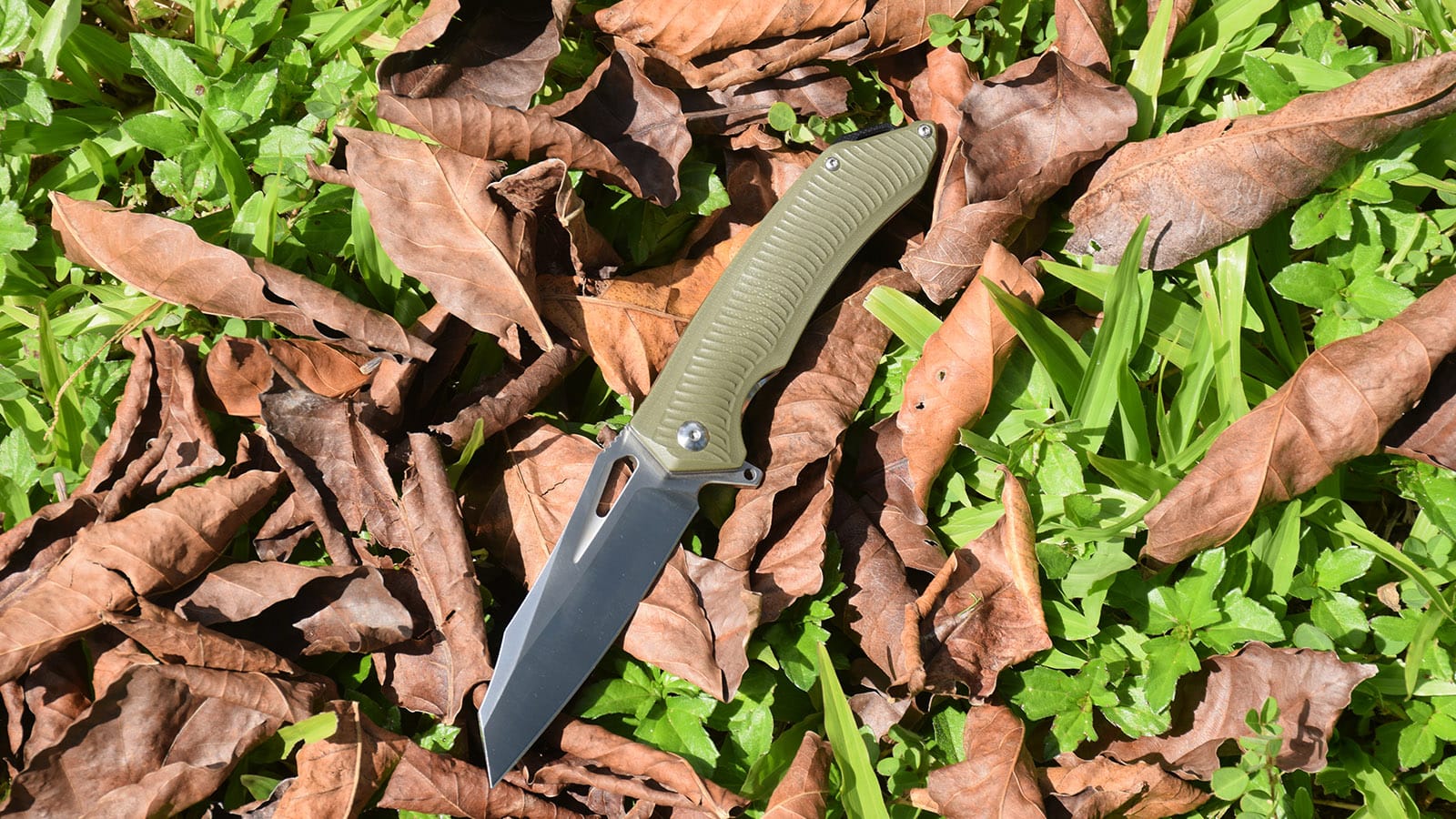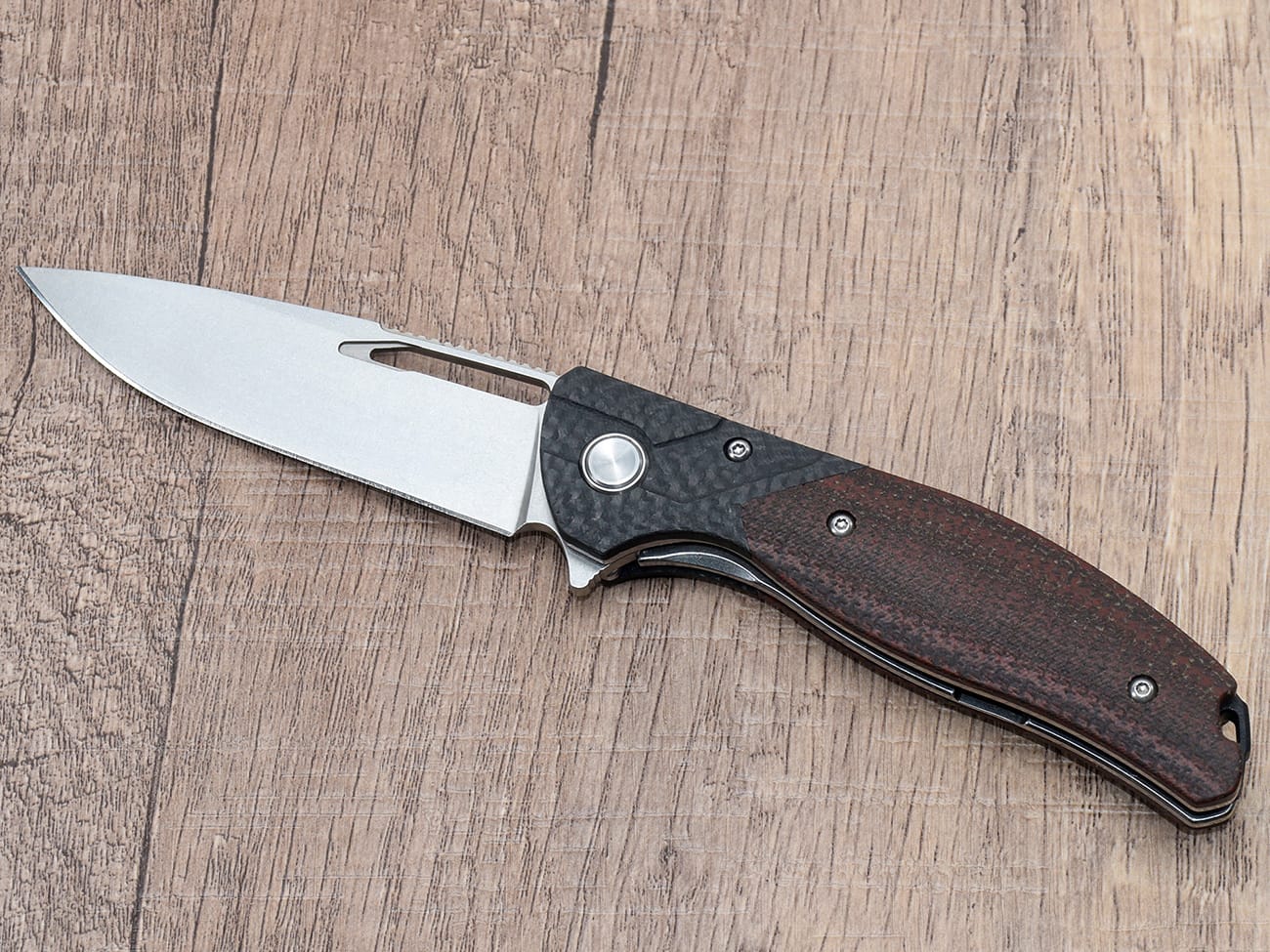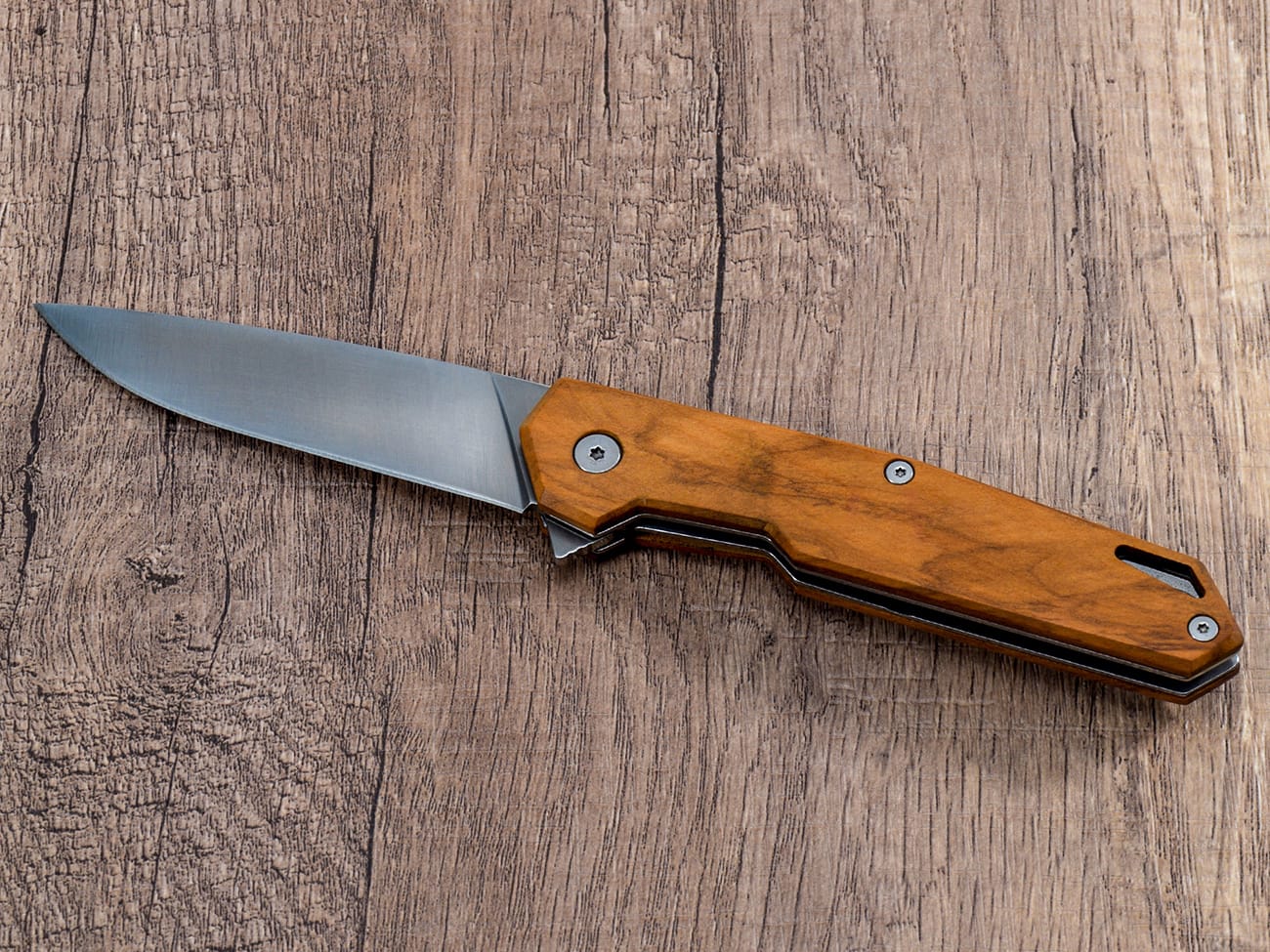Tanto si es nuevo en Navajas de bolsillo o si desea perfeccionar su técnica, saber cómo abrir correctamente una navaja plegable es crucial tanto para la seguridad como para la funcionalidad. Esta completa guía le guiará a través de varios métodos de apertura, consideraciones de seguridad y consejos de expertos para ayudarle a dominar el arte del despliegue del cuchillo.

Navaja plegable con mango de G10, hoja negra y clip de bolsillo
¿En qué se diferencia una navaja plegable de otros cuchillos?
A cuchillo plegable se diferencia de los cuchillos de hoja fija por su mecanismo pivotante, que permite plegar la hoja dentro del mango. Este diseño la hace más compacta y portátil, al tiempo que requiere técnicas de apertura específicas para un manejo seguro.
Tipos comunes de mecanismos de apertura
Las navajas plegables modernas emplean diversos mecanismos de apertura. He aquí los tipos más comunes:
- Espárragos de pulgar
- Pestañas Flipper
- Agujeros para pulgares
- Mellas en las uñas
- Sistemas de apertura asistida
- Cerraduras de botón
¿Cómo funcionan los espárragos del pulgar en una navaja plegable?
El pasador es uno de los mecanismos de apertura más populares. Para utilizarlo:
- Sujete el cuchillo firmemente con la mano dominante
- Coloque el pulgar sobre el espárrago
- Aplica presión hacia fuera y hacia arriba
- Guíe la cuchilla hasta la posición de apertura total
Comprender el mecanismo de la aleta
Cuchillos EDC suelen incorporar un mecanismo basculante, que sobresale de la parte posterior cuando están cerradas. Este método de despliegue ofrece una apertura rápida y fiable:
- Agarra bien el asa
- Coloque el dedo índice en la aleta
- Aplica una presión rápida y firme
- Deje que la cuchilla gire hasta su posición
¿Es mejor el diseño del agujero para el pulgar de Spyderco?
El diseño con orificio para el pulgar, popularizado por Spyderco, ofrece varias ventajas:
- Operación ambidiestra
- Mayor superficie de contacto
- Despliegue sin problemas
- Fiabilidad en todas las condiciones meteorológicas
Consideraciones de seguridad al abrir un cuchillo
Antes de intentar abrir cualquier navaja plegable, tenga en cuenta estos puntos de seguridad:
"La seguridad no es sólo cuestión de técnica, sino de mentalidad y concienciación". - Cuchillos Ilustrados
- Apunte siempre la cuchilla lejos de usted y de los demás
- Mantenga un agarre firme de la empuñadura
- Cuidado con el mecanismo de cierre
- Mantenga los dedos alejados de la trayectoria de la cuchilla
¿Cómo afectan los distintos tipos de cerradura a la apertura?
Varios Tipos de cerraduras para cuchillos influyen en la forma de abrir el cuchillo:
| Tipo de bloqueo | Consideraciones iniciales |
|---|---|
| Bloqueo de revestimiento | Supervisar el enganche de la cerradura |
| Bloqueo de marco | Cuidado con el exceso de recorrido |
| Bloqueo de botones | Asegurar la holgura de los botones |
| Bloqueo del eje | Verificar la retracción de la cerradura |
Mantener una apertura suave
Para que su cuchillo se abra sin problemas:
- Limpiar el pivote regularmente
- Aplique la lubricación adecuada
- Ajuste la tensión del pivote según sea necesario
- Retire los residuos del mecanismo de cierre
¿Cuáles son los problemas de apertura más comunes y sus soluciones?
A veces las carpetas pueden ser testarudas. Estos son los problemas típicos y sus soluciones:
- No se abre: Compruebe si hay residuos o si el pivote está apretado.
- Acción pegajosa: Aplique lubricante al pivote
- Resistencia de la cerradura: Superficies de cierre limpias
- Apertura irregular: Ajuste los tornillos de pivote
Consejos para las técnicas de apertura con una mano
Dominar la apertura con una sola mano requiere práctica:
- Empiece con un cuchillo en buen estado
- Practicar en un entorno seguro
- Centrarse en movimientos suaves
- Crear memoria muscular mediante la repetición
Puntos clave para abrir un cuchillo de forma segura y eficaz
- Priorizar siempre la seguridad en el manejo de cuchillos
- Elija el método de apertura que mejor se adapte al diseño de su cuchillo
- Mantenga su cuchillo regularmente para un rendimiento óptimo
- Practicar la técnica adecuada en un entorno controlado
- Tenga en cuenta las leyes locales sobre el porte y uso de cuchillos.
- Mantenga limpios el pivote y el mecanismo de bloqueo
- Nunca fuerce un cuchillo si se resiste
Recuerde que aprender a abrir una navaja plegable de forma segura y eficaz es cuestión de práctica y paciencia. Tanto si utiliza una navaja navaja o un moderno carpeta tácticaEstos principios le ayudarán a garantizar un uso seguro y eficaz de su herramienta de corte.




